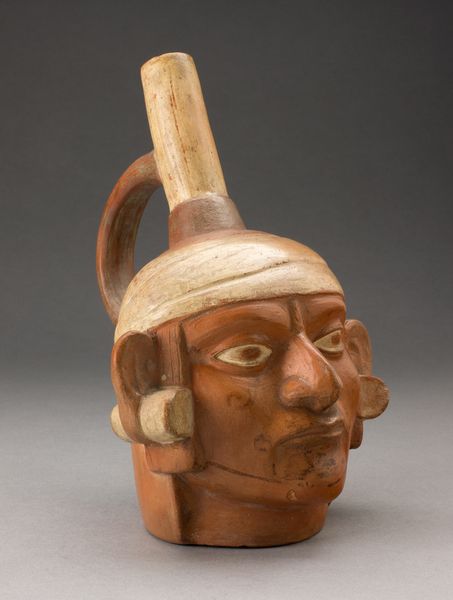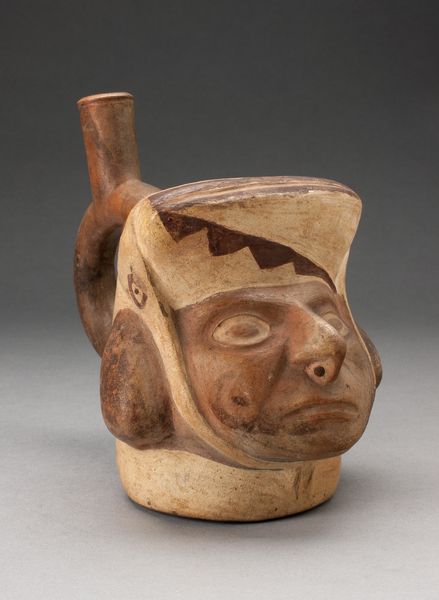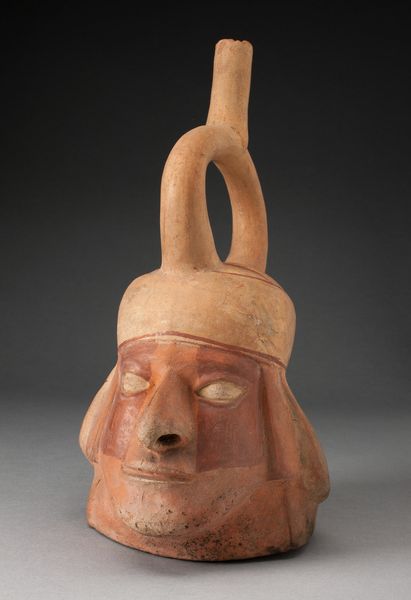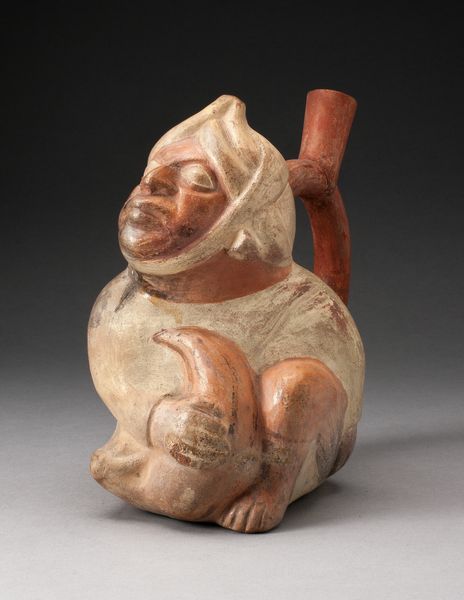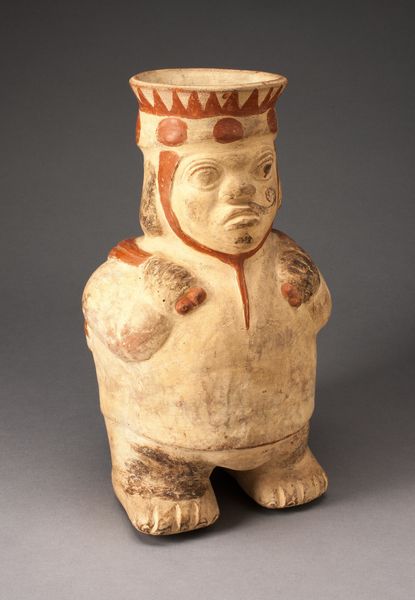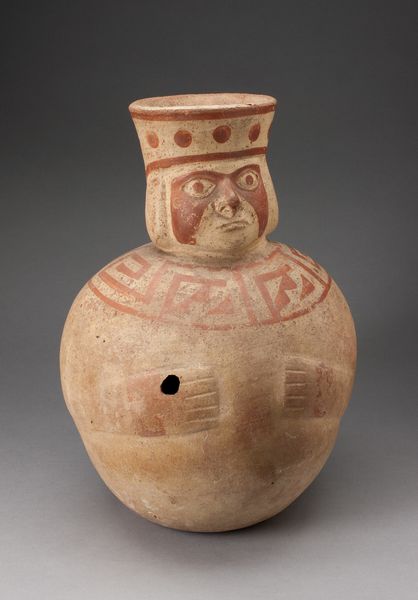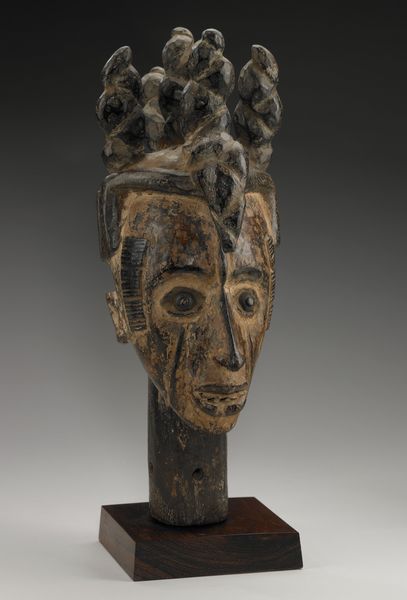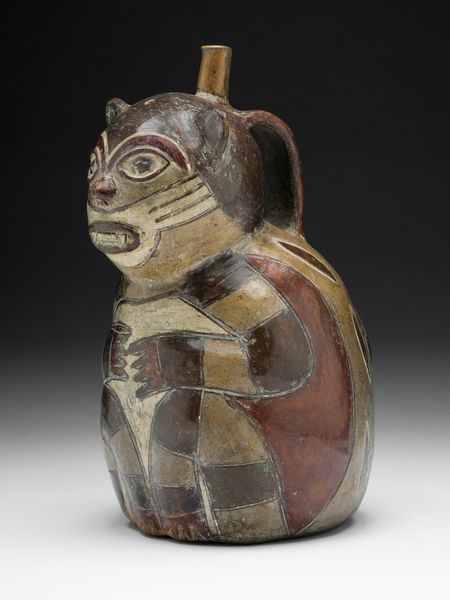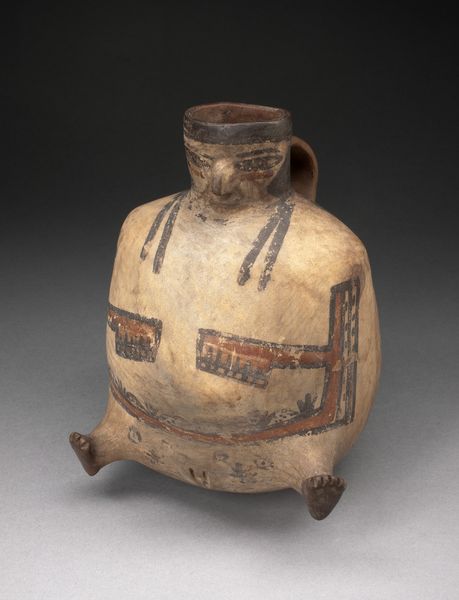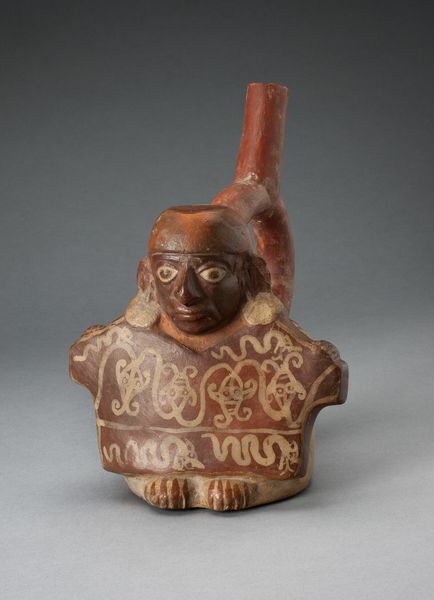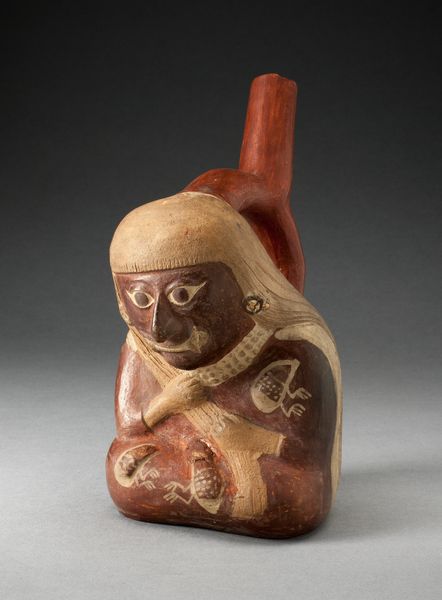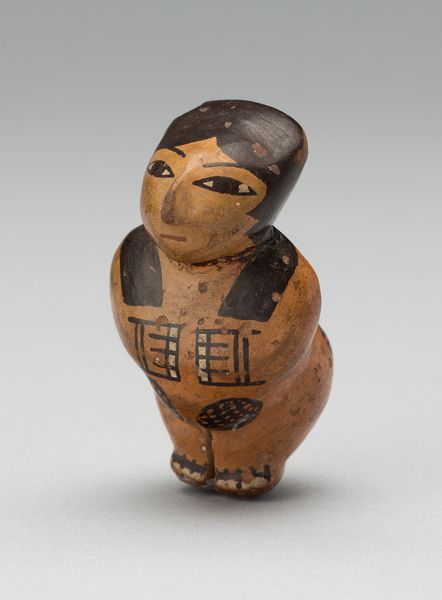
Anthropomorphic Flat-sided Flask with Molded Head and Painted Textile Tunic c. 100 - 500
0:00
0:00
ceramic, terracotta
#
portrait
#
ceramic
#
figuration
#
form
#
terracotta
#
indigenous-americas
Dimensions: 30.5 × 20.3 cm (12 × 8 in.)
Copyright: Public Domain
Curator: Here we have an anthropomorphic, flat-sided flask made by the Moche people, sometime between 100 and 500 AD. The Art Institute of Chicago is lucky to have it. Editor: Striking. I'm immediately drawn to the duality of the form: the bulbous body contrasting with that rather severe, almost geometric head. It gives an immediate sense of visual tension. Curator: The piece does exemplify Moche ceramic artistry, reflecting their skill in modeling and painting. Beyond mere utility, its form strongly suggests symbolic intent and perhaps, ritualistic function. Editor: Definitely. That textile tunic design around the neck suggests rank and the dark pigmentation around the head and face draws the eye upwards. Do you think this head might have served as some kind of early advertisement, proclaiming one’s status or affiliations in life? Curator: Most likely! The Moche society, although not as widely discussed as other ancient societies in our education system, held an extremely complex sociopolitical structure. These types of ceramic portrait vessels have actually become valuable ethnographic tools helping us now explore in the 21st Century some facets of Moche life. The headdress alone might signify certain roles. Editor: It certainly conveys the symbolic power held by attire! It would be nice to see these pieces out of these vitrines so that researchers could test how stable this design is when full of some sort of liquid; this has definitely changed what I thought about ceramic sculptures and other pieces. Curator: Agreed. Its placement in a modern museum inevitably strips it of its original context and functionality; now a subject under close, unwavering lights forever, viewed by audiences it likely never intended. Editor: A worthwhile sacrifice, wouldn’t you agree? To preserve that cultural history to allow more folks to know about these figures beyond those civilizations who lived with them in South America, is it not more valuable? Curator: Perhaps, I am swayed. Still, looking at the vessel as a formal exercise, the economy of line and shape is what really compels; the synthesis of human form with abstract volume. Editor: I can appreciate that more objective reading. The power dynamics at play and encoded within its aesthetic form are truly amazing here. I must come back with other thoughts some other day, as there’s more to explore.
Comments
No comments
Be the first to comment and join the conversation on the ultimate creative platform.
